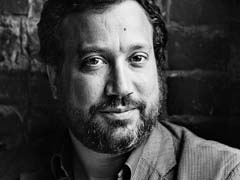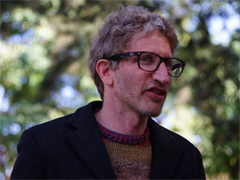Forensic Architecture (FA) is a research agency based at Goldsmiths, University of London. Its multidisciplinary team works together to reconstruct and document cases of abuse for purposes of reporting them in legal and political forums.
To quote the web page of Forensic Architecture:
On 27 February 2020, the Turkish government opened its borders with Greece in an attempt to exert political pressure on the EU over Syria. Thousands of migrants and refugees were funneled to a single point on the land border between the two countries, the border fence near Kastanies/Pazarkule, with the promise of an open route to Europe.
The Greek government responded by deploying its police and military to the region. It warned migrants not to cross, and suspended its asylum system. After several days of tension, on 3 March, a committee of EU officials, including the Greek Prime Minister, Kyriakos Mitsotakis, and the European commission president, Ursula von der Leyen, visited the region. They gave a joint statement, where der Leyen praised Greece as the ‘shield’ of Europe.
On the next day, 4 March, violence escalated near the border crossing. Reports emerged of shootings, and casualties. Turkish authorities stated that the Greeks “used live rounds and wounded five asylum-seekers.” The Greek authorities denounced these claims as fake news. There is still no commonly accepted account of what happened that day.(1)
Headed by Eyal Weizman, architect and Professor of Spatial and Visual Cultures, Goldsmiths, University of London, Forensic Architecture (FA) is a research group consisting of architects, programmers, filmmakers, investigative journalists, artists, scientists, and lawyers. Working from Goldsmiths, FA uses high technology to investigate cases of human rights violations by states, security services and forces, armies, and corporations.
By means of digital tools for spatial analysis, modelling, immersive technologies, documentary compilation, interviews, and academic partnerships, they reconstruct the scenes and events of cases in order to be able to present this material as proof in judicial inquiries and parliamentary commissions, and to publish their findings in the media. A perfect example of spatial forensics.
In the case of Muhammad Gulzar, Forensic Architecture has worked with media agencies and groups such as DerSpiegel, Lighthouse Reports, and Bellingcat collecting and examining a large number of videos and photographs. They have conducted interviews with eyewitnesses and requested expert reports from acoustics specialists. Using video editing tools and three-dimensional modelling, they were able to reliably reconstruct the events of 4 March and determine with little margin for error the origin of the shots that killed Gulzar and wounded another six people that day.
In addition to presenting its work as evidence in legal proceedings, FA also seeks to show its projects in areas beyond the legal field. Aware of the power of the media to make its work better known and to thus to create social pressure to support its causes, FA has exhibited to great effect in hundreds of museums and art galleries and centres around the world. It has then used this visibility to question power and the institutions. This was the aim of the work FA presented at Documenta 14 – Kassel, namely a forensic reconstruction of a murder committed by neo-Nazis in the city when aspects of the inquiry into the case still seemed to be unclear.
Besides questioning the role of the artist, such a project might give the impression that, by moving outside the solemnity and rigour of the courtroom, it comes close to the subjectivity associated with the world of art. Indeed, this is an express approximation and confusion consciously sought by the team, as evidenced by the fact that the expression “forensic aesthetics” frequently appears in the team’s publications and exhibitions.
In Weizman’s words, this is not a matter of aestheticising or trivialising the facts that are presented but, rather, it refers to the Greek etymology of the word aesthetics: “susceptible to being perceived by the senses”.
“[…] any forensics specialist will tell you that aesthetics is absolutely essential for the investigative work and for its presentation. In terms of presentation, everybody knows that the rhetorical ability of a lawyer hinges on more than facts; it’s the way they are presented with forensics, objects, images, which involves all kinds of aesthetic decisions like color, tone, shade, crop, and so on. This illustrates something that everybody knows, yet nobody would speak about in forensic work. We depend on aesthetics—we are aesthetic practitioners—but we need to keep away from that association.”
In work with collected audiovisual material, there is a prior and mediated aetheticisation at the moment when these images and sounds are captured. FA makes this “perception of the senses” work for its causes. The combination of two disciplines like forensic science and architecture gives rise to new practice. Beyond pure expertise, forensic architecture applies digital tools from the standpoint of political commitment and a way—rather different from the usual focus of studies in architecture and urban planning—of viewing public space as a scene of conflict. It is a way of working that confronts power instead of going along with its precepts. And it is viewed with suspicion by the powers-that-be. Yet, Weizman says, “[…] architects need to be public figures … They should take positions, whatever they do.”
The work of Forensic Architecture seems to exemplify the words of Michael Sorkin: “Architecture is never non-political: it always reinforces a set of social relations, whether within the family or between the ruler and the ruled.” (2) FA poses the political dimension from praxis itself, using it as a discipline, as a tool whose result does not construct, or build, or alter physical space, perhaps, but it does, of course, construct a social and political space, no longer reinforcing but constructing a set of social relations.
This stance is far removed from that of eminent figures of the profession who, without compunction, accept that unconcern about power is an inherent part of the job. One well-known architect sums it up, in question-and-answer form. “Or do you know of any moment in the history of architecture in which an architect contributed to the decisive issues of society? Architects have always kept company with the world’s mighty.” (3) Such a barefacedly cynical statement is what the work of Forensic Architecture seems to be trying at least to refute.
Notes:
(1) Forensic Architecture (2020). THE KILLING OF MUHAMMAD GULZAR. forensic-architecture.org. https://forensic-architecture.org/investigation/the-killing-of-muhammad-gulzar.
(2) Wagner, Aleksandra. (26 November 2017) Michael Sorkin: Interview by Aleksandra Wagner. lebbeuswoods.wordpress.com https://lebbeuswoods.wordpress.com/2007/11/26/michael-sorkin-interview-by-aleksandra-wagner/.
(3) Jacques Herzog. (13 October 2020) Letter to David Chipperfield. domusweb.it https://www.domusweb.it/en/architecture/2020/10/13/jacques-herzog-letter-from-basel.html.




